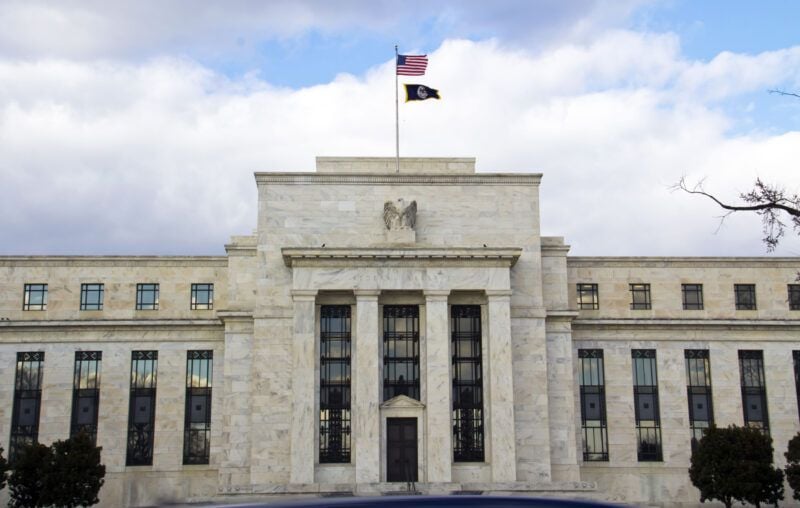The Federal Open Market Committee (FOMC) increased its federal funds rate target by 50 basis points on Wednesday, a smaller increase than in recent meetings. The target inflation range is now 4.25 to 4.5 percent. The FOMC has increased its target rate by 425 basis points this year.
“Having moved so quickly and having now so much restraint that’s still in the pipeline,” Federal Reserve Chair Powell told reporters at the post-meeting press conference, “we think that the appropriate thing to do now is to move to a slower pace.”
Although the Fed has slowed the pace of rate hikes, it now expects it will have to raise its federal funds rate target higher than its policymakers had previously projected. In September, the median FOMC member projected it would increase its federal funds rate target to 4.4 percent in 2023, before bringing it back down to 3.9 percent in 2024 and 2.9 percent in 2025 . Now, the median FOMC member projects the federal funds rate target will rise to 5.1 percent in 2023, and then decline to 4.1 percent in 2024 and 3.1 percent in 2025. In other words, Fed officials have revised the path for the federal funds rate target upward.
There is a broad consensus at the FOMC that rates must go higher still. Of the 19 members offering projections, 17 reported federal funds rate targets in excess of 5.0 percent for 2023; 10 members projected a federal funds rate target in the range of 5.0 to 5.25 percent; two members projected the federal funds rate target would exceed 5.5 percent.
There is much less agreement about the path of the federal funds rate target thereafter. The median FOMC member projects a federal funds rate target in the range of 4.0 to 4.25 percent in 2024, 25 basis points lower than today. However, seven members project a higher rate for 2024.
Most members project a lower rate in 2025, with the median projection in the range of 3.0 to 3.25 percent. However, three members project the federal funds rate target will be above 4.0 percent; and one member projects it will exceed 5.5 percent.
Is the Fed on track to bring inflation down? “I would say that it is our judgment, today, that we are not at a sufficiently restrictive policy stance yet,” Powell told reporters, “which is why we say that we would expect that ongoing hikes will be appropriate.” He said, however, that the federal funds rate target is now “into restrictive territory.”
It is difficult to say whether the current projected path for the federal funds rate target will be sufficiently restrictive to bring down inflation. But it is somewhat easier to judge whether the federal funds rate target is currently in restrictive territory.
According to the Fisher equation, the real (inflation-adjusted) federal funds rate target is equal to the nominal federal funds rate target minus expected inflation. We don’t observe expected inflation directly, but one might use the previous month’s core inflation rate as a proxy. In November, core Consumer Price Index (CPI) inflation was around 2.43 percent. That suggests the real federal funds rate target range is approximately 1.82 to 2.07 percent, which most would agree is in restrictive territory.
Compare the current estimated real federal funds rate target range with estimates for the previous two months. In November, the nominal federal funds rate target range was 3.75 to 4.0 percent and expected inflation (proxied by prior month core CPI inflation) was roughly 3.66 percent, putting the estimated real federal funds rate target range at 0.09 to 0.34 percent. In October, the nominal federal funds rate target range was 3.0 to 3.25 percent and expected inflation (proxied by prior month core CPI inflation) was around 7.44 percent. The estimated real federal funds rate target range was -4.44 to -4.19 percent.
These back-of-the-envelope calculations suggest that the FOMC moved the real federal funds rate target range by roughly 6.26 percentage points between October and December. Recall that it only increased its nominal federal funds rate target by 1.25 percentage points over this period. The bulk of the increase in the estimated real federal funds rate target range came from lower expected inflation.
The effect of declining core inflation may partly explain why the Fed has slowed the pace of its rate hikes. Declining core inflation will likely cause inflation expectations to decline, which causes the real federal funds rate target to rise. Hence, Fed officials can generate similarly sized real rate target increases with smaller nominal rate target increases, as declining inflation expectations do some of the work.
Of course, this is also why some believe the Fed may overcorrect: declining inflation expectations may push real rates higher than Fed officials intend.
At the press conference, Powell stressed that the projected path of the federal funds rate target was data-dependent. “What we are writing down today is our best estimate of what we think that peak rate will be based on what we know,” he said. The decision FOMC members make in February will depend on the inflation data released between now and then—and how Fed officials interpret that data.


























